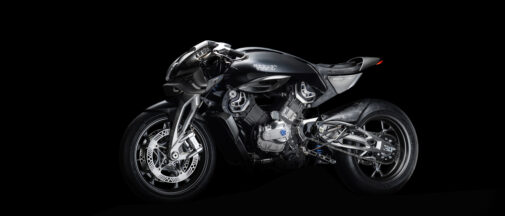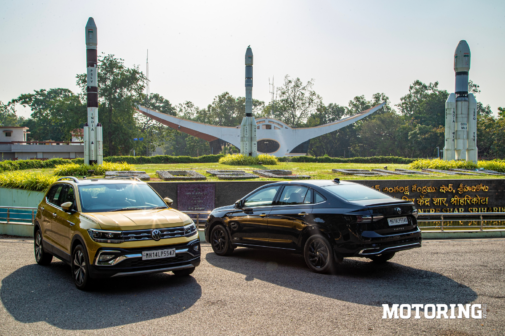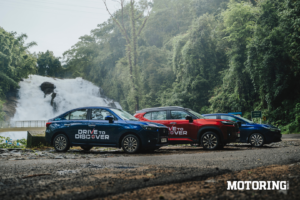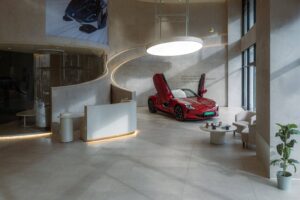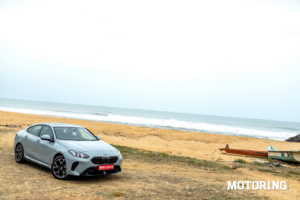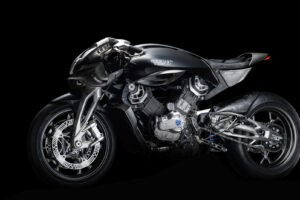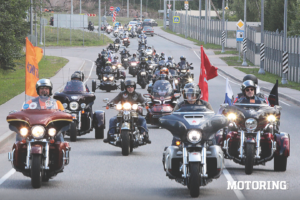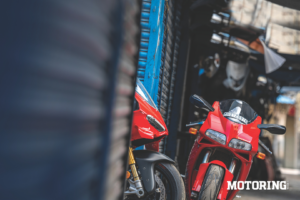Back in the Eighties, if your neighbour transitioned from an old Bajaj Cub to a gleaming red Maruti 800, chances are that the syndrome of neighbour’s envy and owner’s pride took over.
With due apologies to Eurythmics, that’s an apt way of describing what we think are the 25 most iconic cars ever launched in India:
HM AMBASSADOR
From landlords to politicians, every self-righteous man’s status symbol back then was the Ambassador. The chrome grill, round headlights, and spacious interior together screamed luxury and succeeded in becoming the de facto car of choice for the bureaucrat. Initially, it came with a 1.5-litre engine that made 35 bhp. However, the charm of this car was not the power but the way the car carried itself. Over the years, the car did become more powerful with updated features such as central air-conditioning, and a more powerful engine, and even becoming BS IV-compliant before succumbing to the modern chariots.
HM CONTESSA
America had its Mustang and Chevelle, and we had the Contessa. Based on the Vauxhall VX series, it was India’s first muscle car, but the 1.5-litre BMC B-series made a measly 50 bhp. In 1984, when it was launched, it had the body of a car from the ’70s and an engine and gearbox from the 50s. Eventually, it got a 1.8-litre engine developed by Isuzu that made around 80 bhp. It focused on driver comfort with centralized AC, central armrest, and other features which were
considered luxuries for the time.
PREMIER PADMINI
One of the big three Indian classic cars, the Premier Padmini, also known as the Fiat 1100, served the Indian cinema and pop culture since its launch in 1974. While the HM Ambassador was the choice of government officials, the Padmini was the choice of the film industry. Go back to some old Bollywood movie and you will find car chases featuring the Fiat. There is a Fiat Club in Pune and elsewhere with members celebrating their well-maintained car with an annual rally of sorts. One thing the Fiat owners will testify to is that it rarely ever needed a mechanic – so well-structured it was!
MERCEDES-BENZ E-CLASS W124
W124 was iconic for many reasons, but in India, it held a special reason since it was the first time a Mercedes-Benz was made in India. The rest, as they say, has been quite a success story with the Mercedes-Benz continuing to be a coveted status symbol for many. The W124 is art – Germany’s art at its finest. And never mind those who looked at you with their eyes popping out. It drove well with its 145 bhp, four-cylinder engine. Combined with the impressive wheelbase and suspension setup, the car could be rough when it wanted to. A car for those who love their ‘material world’, as Madonna would put it.
TATA SIERRA
The Sierra, Gurkha, and Sport were multiple names for one legendary car. The three-door sports utility vehicle, indigenous to India, looked smashing and boasted the ability to conquer most terrain, with its all-metal body and good ground clearance. It had its issues (woe betide you if the A/C packed up since the rear didn’t have windows), but it set the tone for the butch SUVs of today.
MARUTI 800
This was probably your first car ever, this was almost everybody’s first car till the late 2010’s including the master batsman Sachin Tendulkar. The one that ‘never needed an upgrade’. The brainchild of Maruti Suzuki, the little car gained cult status within no time across the country. Unlike the Ambassador, you could zip your Maruti through small lanes and glide it right into your garage with ease. Sadly, environmental norms saw this legend of a car gradually phased out by 2014.
MARUTI ESTEEM
The nineties brought a decade of joint ventures in the Indian automotive industry brought us Maruti Suzuki and Esteem. And it stood true to its name. Not only did it look premium, but with its 1.3-litre engine making 84 bhp, it drove like one too. The car ran huge sales for two reasons: one MARUTI ESTEEM was Maruti Suzuki’s constant advertising about the ability of the car to outperform without putting the driver’s life at risk and secondly, it was made with a perfect understanding of what India wanted, which included safety, performance, and a modest amount of luxury.
MARUTI GYPSY
The car of the ‘military’ man featured any and everything that the border needed to guard the country. It was the lightest SUV to be produced at the time and yet could support nearly 500 kilograms. The car, coupled with the all-new suspension by Maruti Suzuki and its 970cc F10A engine, has been in service since 1991. While the car did compromise on comfort and fuel consumption, the military use of this iconic four-wheel drive strongly cemented its presence. Also, to its credit was its sleek and rugged styling.
TATA SUMO
A 1994 classic, the Tata Sumo sought to fulfil the passenger problem. With its ability to house about 10 people, a strengthened rear axle, and an all-wheel drive system coupled initially to the Xd88 Peugeot was the perfect combination for Mahindra and Mahindra’s rise. It was also bold enough to light the industry afl ame. And giving it its extra appeal was the pictorial representation of the Sumo wrestlers. Incidentally, it was not named after the wrestlers but Sumant Moogaokar who was then the Managing Director of Tata Motors.
MARUTI ZEN
‘Zero Engine Noise’ — that’s what Zen stood for, and not the Japanese word that loosely translates to the feeling of being complete. Yet, the Zen stayed true to both. It came with stereo systems, power windows, and other luxuries at an affordable price. Over the years, the car was able to carry the best of the Maruti 800 and added its flair to the mix. It was lovely to look at; kind of cute and reliable enough to cure any mood with one big smile.
HYUNDAI SANTRO
Launched in 1998, the OG Santro’s unique, tall-boy design, with its high roof, gave it a distinct character; it was considered quite fashionable at the time if you can believe it. The car was comfortable, spacious, and practical, which made it an instant hit as a go-to family vehicle. Its additional charm was that it was Shahrukh Khan who endorsed the car in all its commercials while being at the
beginning of his career.
TATA INDICA
Starting in 1998, this small hatchback has been the cornerstone for many who wanted more than a Nano but not too much. It offered a good interior and a relative performance. But then, Tata Indica soon turned into the private transporter’s car, ferrying employees back and forth, especially those working in the IT offices or call centres. From a car, it turned into a cab. Tata Motors was the first company to refer to its own Indica as a ‘cab’ to promote more taxi sales.
FIAT PALIO 1.6 GTX
Every Fiat owner knows that the pinnacle of Fiat in India was the Palio 1.6 GTX while its rivals were the equally iconic Zen and Swift. It was able to hold its own both with a dedicated fan base and the general market. The 100 bhp, 16-litre engine could scream to about 7000 rpm, thereby showing the meaning of true performance. Another feature that made this car tick was how old-fashioned it was. It certainly made for the last bastion of the Fiat in India.
HONDA CITY
Most petrolheads can never really wrap their heads around what this car is — some would call it a sports sedan due to its VTec engine, while others considered its extreme reliability, comfort, and effortless ownership experience to be a regular city car which had outdone itself. And that worked in its favour. A Honda City was perfect for corporate honchos as it was for youngsters who modified it with extreme body kits.
MARUTI SUZUKI SWIFT
Launched in May 2005, this sporty, dynamic car became a massive hit, like the other Marutis. It was quick, looked good, and represented the street car culture that was booming at this time. Maruti Suzuki was revolutionary in their approach with power steering and improved suspension mated to the iconic K-series engine, which was a masterstroke for the Indian youth. Still often used as a
canvas for many performance and aesthetic upgrades, the car was built with the perfect plan, and it delivered what it promised, thereby dominating the hatchback market.
MARUTI SUZUKI ALTO
The new millennium brought us the successor to the Zen — the Alto. Just like the Zen and the 800, this one also got two things right: affordability and efficiency. It was low maintenance and coupled with Maruti’s strong sales and service network, getting spares was easy, too. Even today, when modern SUVs struggle through the treacherous regions of the Himalayas, the Alto with its 796cc engine makes it look like a cakewalk. No wonder it has earned the nickname ‘Mountain Goat’ or nowadays referred to as ‘Lord Alto’.
MAHINDRA SCORPIO
The likes of the Qualis and the Sumo showed India’s fondness for big vehicles. So naturally, Mahindra had to answer. Enter the Scorpio — Mahindra’s all-new SUV that was more spacious than the Qualis, Sumo, and even the Armada Grand. It was a car that you could drive to work and then venture into the unknown over the weekend. The magic lay in its name too – Scorpio. You knew then that its sting would be deadly!
MAHINDRA THAR
The Scorpio struck the right ‘work-life balance’, but those who had more inclination towards the ‘life’ part, needed something serious, and Mahindra obliged. The Thar was the modernized version of the Mahindra Legend. Its 2.5-litre turbo diesel belted 105 horses and 25.18 kgm. Of course, you could buy it in a 4-wheel drive trim if the standard 2WD setup didn’t cut it for you. It was the bratty brother of the Mahindra Scorpio and was unbeatable when venturing on the beaten path.
FORD FIESTA 1.6 S
Like the Honda City equation, the Ford Fiesta entered the fold in early June 2009, a sporty variant of a mid-size sedan. It just didn’t look sporty with its spoiler and flared wheel arches but made a respectable 100 bhp and also had stiffer suspension along with grippy tyres. That said, this car, despite the stiff suspension, also managed to soak in the bumps of our roads. Sporty and practical? Who wouldn’t love this, right?
TOYOTA INNOVA
2005: The Qualis hung up its boot and the Innova took over the reins. It did everything the Qualis could but with more fl air. Heck, it was the first mass-market car back then to feature pilot seats. With its modern design and the IMV (Innovative International Multipurpose Vehicle) platform, it became an instant hit. After all, back then its price started from under ` 7 lakh. From fleet operators to corporate leaders, and politicians, the Innova was and continues to be a favorite. For a car that didn’t succeed internationally, the Innova certainly found
its loving audience in India.
SKODA OCTAVIA RS
Petrolheads need no introduction for this car. The iconic Skoda made headlines and head turns in every market it was a part of. Its 1.8-litre engine made 150 bhp and its German pedigree meant that even after tuning the car to extract 100 more horses, it would still run strong. It instantly earned its rep in the tuning and drag racing scene in India and continues to be a favourite. Decades later, Skoda introduced a model that put out 230 bhp right out of the factory.
HONDA ACCORD V6
Honda’s Indian flagship, the Accord was in a league of its own and the most exciting car Honda has brought in to date. Launched in 2008, the sports luxurious design was a living embodiment of an oxymoron. The car was powered by a 2.4-litre i-VTEC engine producing 180 bhp which was later upgraded to a 1.0-litre engine, thus making nearly 300 bhp. While the car ticked all the boxes of a Honda in terms of stability, keeping costs, reliability, and performance with no slouch on efficiency, the car was a dream come true for those with deep
pockets. However, this legend of a car was soon dropped since it could not compete with the plethora of cars already available in the market and that was a shame.
VW POLO GT
The younger brother of the Golf GT, the Polo GT was India’s long-awaited answer to this legendary hatchback. Fans of this beast all have different answers: some wanted one because of their age- an old rival in a car racing game called Sonny, unfairly, had access to nitrous oxide Others preferred it for its sports look, feel, and drive and some chose it for being a Volkswagen. The car also came with an automatic DSG gearbox and a 104 bhp engine that was able to swish past any
even conceivable competition. With interiors that spelt class and quality, this car was everything one would want and just a little bit more.
TATA NANO
Released in 2008, the ‘people’s car’ gained cult status in the Indian market for its mind-blowing price of Rs 1 lakh. The small, twin-cylinder petrol engine became a
dream accessible to everyone in India, and its closest rivals? Well, they lacked a roof, a pair of wheels, and the capacity to carry four people (at least legally). It had its share of controversies and issues, and by the time production ceased, it had all been forgotten; but it showed what was possible when Indian ingenuity decided to go to work.
MAINI REVA
Reva was the first electric car in India. This shy little thing is powered by a 48V:200-amp battery with an electric motor that could pump out a mere 6.4 bhp and deliver about 80 to 100 km of range per charge. With fuel prices rocketing, the Reva turned out to be not just a smart alternative but also a statement as to how environmentally conscious one was.











